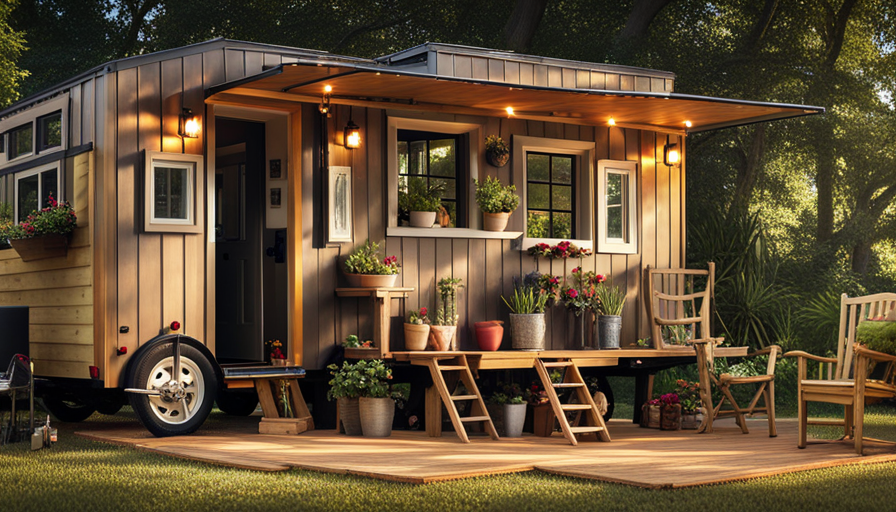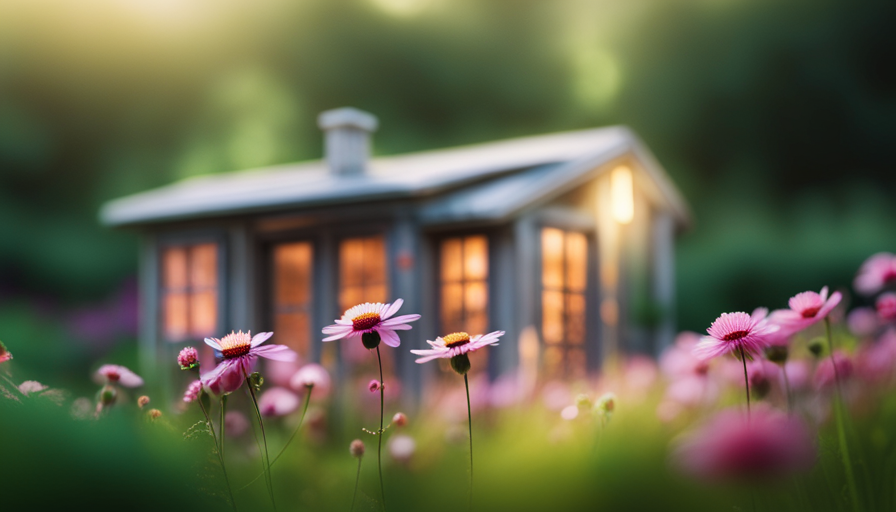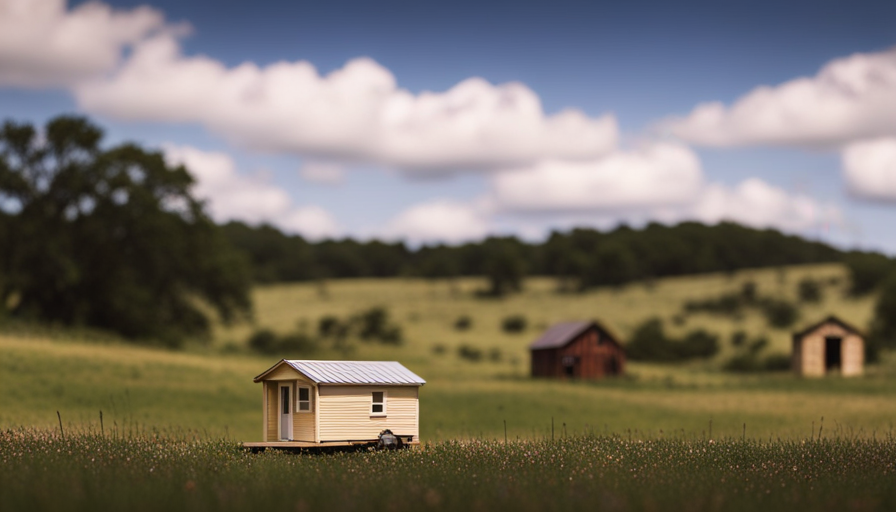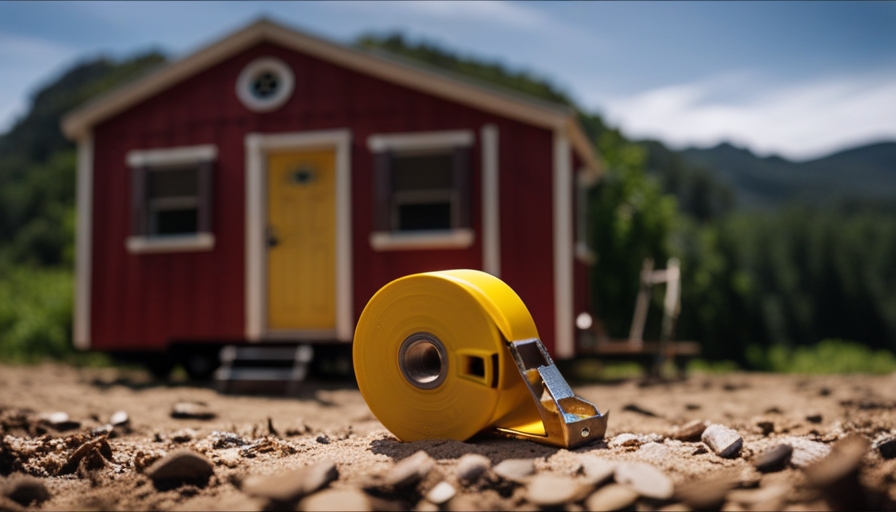Have you noticed tiny black bugs flying around your house, particularly near the windows? These pesky little pests can be quite a nuisance, but fear not, as I have the solution to your problem!
In this article, I will provide you with a comprehensive guide on how to get rid of these tiny black bugs once and for all.
First things first, we need to identify the type of bug we’re dealing with. Is it a common housefly, a fruit fly, or perhaps a tiny beetle? Understanding the specific bug will help us determine the most effective method of elimination.
Next, we must find the source of infestation. Are these bugs attracted to food, moisture, or light? Once we pinpoint the cause, we can take appropriate measures to eliminate it.
Cleaning and decluttering the area is crucial in preventing these bugs from returning. Additionally, sealing cracks and gaps in your windows and walls will help keep them out.
If natural remedies fail, don’t hesitate to use insecticides or bug sprays specifically designed for indoor use. However, if the infestation persists, it may be time to seek professional help.
By following these steps and implementing preventive measures, you can say goodbye to those tiny black bugs and enjoy a bug-free home near your windows.
So, let’s get started on reclaiming your space!
Key Takeaways
- Identifying the type of bug is crucial for effective elimination.
- Cleaning and decluttering the area is important to prevent bugs from returning.
- Sealing cracks and gaps in windows and walls can help keep bugs out.
- Natural remedies, bug traps, insecticides, or professional help may be needed depending on the severity of the infestation.
Identify the Type of Bug
Have you noticed those tiny black bugs in your house near the window? Let’s figure out what type of bug they are so we can find the best way to get rid of them!
To distinguish the species of these bugs, it’s important to closely observe their physical characteristics. Look out for features like the size, shape, color, and any distinct markings they may have. You can also try to capture a few of these bugs in a container for further examination or take clear pictures to show to an expert.
If you’re unsure about the identification, it’s recommended to consult a bug exterminator or an entomologist who specializes in identifying insects. They have the knowledge and expertise to properly identify the bug species and provide appropriate solutions for their removal.
Once we determine the source of infestation, we can take necessary steps to eliminate these pesky bugs and ensure they don’t return.
Determine the Source of Infestation
First, you need to identify the root cause of the infestation in order to effectively address the issue. Start by carefully examining the affected area near the window for any signs of entry points or sources of food and moisture. Look for cracks or gaps in the window frame or nearby walls that could be providing access for the tiny black bugs.
Additionally, check for any food spills or crumbs that may be attracting them. If you’re unable to identify the source on your own, it may be helpful to call a pest control professional who can conduct a thorough inspection and provide expert advice on how to eliminate the infestation.
Once you’ve identified the source of the infestation, it’s important to take steps to clean and declutter the area. Remove any clutter or unnecessary items near the window that could be providing hiding places for the bugs. Vacuum the area thoroughly to remove any eggs or larvae that may be present.
Additionally, clean any spills or crumbs and make sure the area is kept clean and dry to discourage further infestation. By taking these steps, you can effectively address the issue and prevent future problems.
Clean and Declutter the Area
To effectively address the infestation issue, it’s crucial to thoroughly clean and declutter the area surrounding the window. Cleaning techniques play a vital role in eliminating these tiny black bugs from your house.
Start by vacuuming the affected area to remove any visible bugs and their eggs. Pay close attention to the corners, window sills, and crevices where these pests tend to hide. Use a damp cloth to wipe down the window frames, removing any dirt or debris that may attract the bugs. Additionally, consider using a mild detergent solution to clean the window screens, as these can also harbor these pesky insects.
Organizing tips can also help prevent future infestations. Remove any unnecessary items near the window that can provide hiding spots for the bugs. Keep the area clutter-free and ensure that all food sources are stored properly, as these bugs are attracted to food residue. Regularly check and clean any potted plants near the window, as the bugs can hide in the soil or on the leaves.
By cleaning and decluttering the area, you are taking essential steps to eliminate the tiny black bugs. The next section will focus on sealing cracks and gaps to further prevent their entry into your home.
Seal Cracks and Gaps
One crucial step in preventing future infestations is sealing any cracks and gaps in the area surrounding the window. This will help to keep out the tiny black bugs and ensure that they don’t find their way back inside.
Here are three effective sealing techniques to consider:
-
Caulk: Use a high-quality caulk to seal any small cracks or gaps around the window frame. Make sure to apply the caulk evenly and smoothly for a tight seal.
-
Weatherstripping: Install weatherstripping around the window to create a barrier against bugs. This can be done by attaching adhesive-backed foam strips or using door sweeps to seal the bottom of the window.
-
Bug repellent screens: Consider installing bug repellent screens on your windows. These screens are designed to keep out insects while still allowing fresh air to circulate.
By sealing cracks and gaps in the area surrounding the window, you can significantly reduce the chances of bugs entering your home.
In the next section, we’ll explore how to use natural remedies to further eliminate these pesky pests.
Use Natural Remedies
When it comes to getting rid of tiny black bugs in your house near the window, natural remedies can be a great solution. Essential oils and vinegar solutions are effective in repelling these pests, as their strong scents act as a deterrent.
Additionally, diatomaceous earth is a natural substance that can be sprinkled in cracks and crevices to kill bugs upon contact.
Essential Oils and Vinegar Solutions
Using essential oils and vinegar solutions can be an effective method to eliminate those tiny black bugs in your house near the window. Essential oils have many benefits, including their natural insect-repellent properties. Some popular essential oils for bug control are peppermint, lavender, and tea tree oil. Mixing a few drops of these oils with vinegar creates a powerful solution that can deter and kill bugs. Vinegar is also known for its cleaning hacks, making it a versatile option for keeping your house bug-free. To give you an idea of how to use these remedies, here’s a table that shows different essential oil and vinegar solutions you can try:
| Essential Oil | Vinegar | Solution |
|---|---|---|
| Peppermint | White | Spray |
| Lavender | Apple | Soak |
| Tea Tree | Balsamic | Wipe |
Now, let’s move on to the next section where we’ll explore another effective method to tackle these pesky bugs: diatomaceous earth.
Diatomaceous Earth
Diatomaceous earth is a fantastic alternative solution for banishing those annoying little pests from your home. It’s not only effective, but it also offers numerous benefits. Diatomaceous earth is a natural substance made from the fossilized remains of diatoms, which are tiny aquatic organisms. It works by dehydrating the bugs, causing them to die.
One of the major benefits of diatomaceous earth is that it’s safe to use around humans and pets, making it a great option for households with children or animals. Additionally, diatomaceous earth has alternative uses beyond pest control. It can be used as a natural deodorizer, a gentle abrasive for cleaning, and even as a supplement for promoting healthy hair, skin, and nails.
With all these benefits, diatomaceous earth is definitely worth considering. But let’s move on to the next section where we discuss how to set traps or use sticky tape to get rid of these tiny black bugs.
Set Traps or Use Sticky Tape
To catch those pesky bugs, try setting traps or using sticky tape to snag them in their tracks! Here are a few options to consider:
-
Bug Traps: Set up bug traps near the window where you’ve noticed the tiny black bugs. There are various types of traps available in the market, such as pheromone traps or light traps. Pheromone traps lure the bugs with a scent, while light traps attract them towards the bright light and trap them inside. These traps can be effective in reducing the bug population in your house.
-
Sticky Tape: Another option is to use sticky tape. Place the tape near the window or any other areas where you’ve seen the bugs. The sticky surface of the tape will catch the bugs when they come into contact with it. Make sure to replace the tape regularly to maintain its effectiveness.
-
Professional Help: If you’ve tried these methods and are still struggling with the bug infestation, it might be time to consider seeking professional help. You can hire an exterminator who has the expertise and knowledge to identify the type of bugs and implement effective measures to eliminate them from your house.
Now that you’ve tried setting traps and using sticky tape, let’s explore another approach to get rid of these tiny black bugs – using insecticides or bug sprays.
Use Insecticides or Bug Sprays
If you’re looking for a quick and effective solution, bug sprays or insecticides might just be your best bet. These products are designed to kill insects on contact and can be applied directly to the areas where the tiny black bugs are present. However, it’s important to consider the potential risks associated with using insecticides, especially if you have children or pets in the house. Fortunately, there are alternative options available that provide non-toxic pest control.
One alternative to insecticides is diatomaceous earth, a natural substance that can be sprinkled around windows and other entry points to create a barrier that repels bugs. Another option is using essential oils, such as peppermint or tea tree oil, which can be mixed with water and sprayed around the affected areas. These oils have strong scents that bugs find repulsive, making them an effective deterrent.
When using insecticide alternatives, it’s important to follow the instructions carefully and use them as directed. It may take some trial and error to find the best solution for your specific bug problem. Remember to keep your home clean and tidy, as this can help prevent future infestations.
Bug sprays and insecticides are effective options for getting rid of tiny black bugs near windows. However, if you prefer non-toxic pest control, there are alternative options available. Experiment with diatomaceous earth or essential oils to find the best solution for your home. If these methods don’t work, it may be time to seek professional help.
Seek Professional Help
Are you tired of dealing with these persistent pests and ready to bring in the professionals to finally solve your bug problem? Sometimes, no matter how many insecticides or bug sprays we use, these tiny black bugs just won’t go away. That’s when it’s time to consider seeking professional help.
Pest control services can provide the expertise and specialized tools needed to effectively eliminate these pests from your home. Here are a few reasons why professional intervention is worth considering:
-
Expertise: Pest control professionals have the knowledge and experience to identify the type of bug infestation you’re dealing with and develop a targeted treatment plan.
-
Safety: Professionals are trained in the safe handling and application of insecticides, ensuring that your home and family are protected.
-
Long-term solutions: While bug sprays and DIY methods may provide temporary relief, professional pest control services can offer long-term solutions that address the root cause of the infestation.
By enlisting the help of professionals, you can ensure that your home is free from these tiny black bugs. However, it’s important to remember that prevention is key in avoiding future infestations.
Prevent Future Infestations
One effective way to avoid future unwelcome visitors in your home is by implementing preventive measures. By taking proactive steps, you can ensure long-term solutions for bug control.
To start, make sure to keep your windows and doors properly sealed to prevent any tiny black bugs from entering your house. Regularly inspect the screens for any holes or tears, and repair or replace them as needed. Additionally, consider installing weatherstripping around your windows and doors to create a tight seal and minimize the entry points for bugs.
Another effective prevention method is to keep your house clean and organized. Regularly vacuum and sweep your floors, paying special attention to the areas near windows. Wipe down surfaces and remove any food crumbs or spills that may attract bugs. Make sure to also keep your kitchen clean and store food in airtight containers.
Implementing these effective prevention methods can help you avoid future infestations of tiny black bugs in your home. By taking these steps, you can ensure long-term solutions for bug control.
In the next section, we will discuss how regularly monitoring and maintaining your home can further prevent bug problems.
Regularly Monitor and Maintain
When dealing with tiny black bugs in my house near the window, it’s important to regularly monitor and maintain the area to prevent future infestations.
One key point is to check for signs of reinfestation, such as seeing more bugs or noticing damage to the window frame. If any signs are found, it’s crucial to take prompt action by identifying and eliminating the source of the infestation to ensure the problem doesn’t persist.
Check for Signs of Reinfestation
To ensure those pesky bugs don’t return, keep an eye out for any signs of reinfestation around your window. Check for hidden nests or any small cracks or crevices where the bugs might be hiding.
Regularly inspect the area for any eggs or larvae that could indicate a new infestation. If you notice any signs of reinfestation, it’s crucial to take prompt action. Consult with pest control experts who can provide professional advice on how to eliminate the bugs and prevent them from coming back.
Remember, early detection is key to preventing a full-blown infestation. By staying vigilant and taking immediate action if needed, you can effectively keep those tiny black bugs at bay.
Take Prompt Action if Needed
If you notice any signs of reinfestation, it’s crucial to act promptly and seek assistance from pest control experts to ensure a bug-free home. Prompt response is key to preventing these tiny black bugs from multiplying and infesting your house further.
In addition to seeking professional help, there are also some DIY solutions you can try. One option is to thoroughly clean the affected area, using a vacuum cleaner to remove any bugs or eggs. Be sure to dispose of the vacuum bag or empty the canister outside of your home to prevent any bugs from escaping.
Another DIY solution is to apply insecticide specifically designed for indoor use, following the instructions carefully. Remember to keep your windows and doors sealed properly to prevent these bugs from entering your home again.
By taking prompt action and using DIY solutions, you can effectively eliminate these tiny black bugs and maintain a bug-free living space.
Frequently Asked Questions
How do I determine if the tiny black bugs near my window are harmful or dangerous?
To determine if the tiny black bugs near your window are harmful or dangerous, there are a few things you can do.
First, identify the bug by researching common types found near windows, like fungus gnats or carpet beetles.
Second, observe their behavior and any damage they may be causing.
Lastly, consult with a local pest control professional to accurately assess the situation.
Taking these steps will help determine if they pose a threat and guide you in finding appropriate solutions to prevent infestations near windows.
Are the tiny black bugs attracted to specific types of food or materials?
The tiny black bugs in my house near the window may be attracted to specific types of food or materials. Some common attractants for these bugs include sugary foods, crumbs, and moist environments.
To prevent their presence, it’s important to clean up spills and food debris promptly, seal any cracks or openings near windows, and maintain a clean and dry living space. Regular vacuuming and proper storage of food can also help minimize their attractiveness to these bugs.
Can these tiny black bugs cause any damage to my house or belongings?
These little critters may not be the best houseguests, but luckily they won’t cause any major damage to your house or belongings. However, they can have an impact on indoor air quality, especially if you have allergies or respiratory issues.
To prevent future infestations, it’s important to keep your house clean and free of food crumbs or standing water. Regularly vacuuming and sealing any cracks or openings can also help keep these bugs at bay.
Are there any specific natural remedies that are known to be effective in getting rid of these tiny black bugs?
Natural remedies and DIY solutions can be effective in getting rid of these tiny black bugs. Some options include using vinegar, lemon juice, or essential oils like peppermint or lavender. These substances can be mixed with water and sprayed around windows or other areas where the bugs are present.
Additionally, keeping the house clean and free of food debris can help prevent their attraction. Regularly vacuuming and sealing any cracks or crevices can also discourage their presence.
How long does it usually take to completely eliminate the infestation of tiny black bugs in a house?
Eliminating a tiny black bug infestation in a house can be a daunting task, but with patience and perseverance, it can be done. On average, it takes about 2-4 weeks to completely eliminate the infestation.
However, it’s important to avoid common mistakes such as using ineffective bug sprays or neglecting to clean and seal potential entry points. By following a comprehensive approach and staying consistent, you can successfully rid your home of these pesky bugs.
Conclusion
In conclusion, getting rid of tiny black bugs in the house near windows requires a systematic approach. By identifying the type of bug and determining the source of infestation, one can effectively tackle the problem.
Cleaning and decluttering the area, sealing cracks and gaps, and using natural remedies or insecticides can help eliminate these pests. Seeking professional help is also an option for severe cases.
By regularly monitoring and maintaining the house, future infestations can be prevented. Remember, like a determined detective, you can eradicate these bugs and restore peace to your home.
Hi, I’m Emma. I’m the Editor in Chief of Tiny House 43, a blog all about tiny houses. While tree houses are often associated with childhood, they can be the perfect adult retreat. They offer a cozy space to relax and unwind, surrounded by nature. And since they’re typically built on stilts or raised platforms, they offer stunning views that traditional homes simply can’t match. If you’re looking for a unique and romantic getaway, a tree house tiny house might just be the perfect option.










